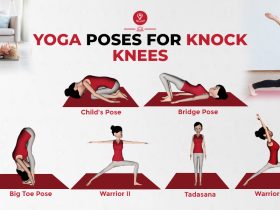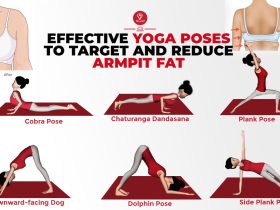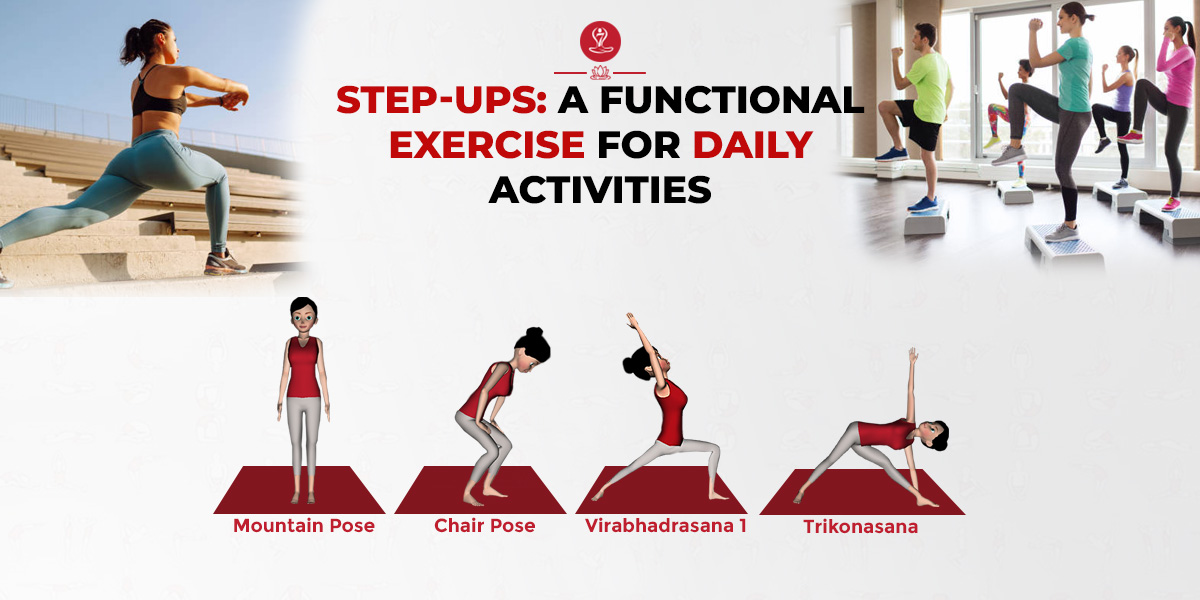
Bhadrasana is mentioned in the yoga texts such as the Hatha Yoga Pradipika (one of the most recognized books on yoga) as well as the Gheranda Samhita. Yogi Swatmarama, the author of Hatha Yoga Pradeepika mentioned that Bhadrasana is one of the four main asanas of meditation. It is mentioned as the fourth asana in the Hatha Yoga Pradipika, which is suitable for sitting for long periods of time.
Bhadrasana Basics
| Sanskrit Pronunciation | Bhadrasana (soup-tah pah-shee-mote-tahn-ah-sah-nah) |
| Meaning | ‘Bhadra‘ means ‘Gracious & Blessed‘ and ‘asana‘ means ‘posture‘ |
| Pose Type | Sitting meditative asana |
| Pose Level | Beginner-friendly posture |
| Style of yoga | Hatha Yoga |
| Other Names | Auspicious or Gracious Pose |
| Stretches | The muscles of the pelvic floor |
| Strengthening | Backbone, thighs, hips and buttocks |
| Duration | 30 second to 3 minutes |
Meaning
Bhadrasana is a Sanskrit term, which on translated in English becomes ‘Bhadra’ means ‘ Gracious or Auspicious ’ and ‘asana’ means ‘ yoga pose’.
An extremely excellent asana for spiritual seekers, Bhadrasana offers similar health benefits as Vajrasana (Vajra Pose). Bhadrasana or Graceful Pose is good for activating the Muladhara Chakra, reducing fatigue, lengthening the spine and opening the hips and eliminating ailments.
However, Bhadrasana is said to be a long-term meditation posture. This asana is a basic yoga asana suitable for beginners. It is a favorable posture for meditation because it is comfortable and can be practiced for long periods of time.
It is also said that by doing this asana for a long time, the Muladhara Chakra gets activated. And it is a good way to control the body as well as the mind.
This is done in two or three ways. Here is a simple method of Bhadrasana.
Practice Guide For Bhadrasana (Gracious Pose)
The Practice Guide to Perform Bhadrasana (Gracious Pose) serves as a valuable resource for yoga enthusiasts seeking to advance their practice, offering a structured and detailed approach to mastering this asana.
Preparatory Poses
- Hero Pose (Veerasana)
- Thunderbolt Pose (Vajrasana)
- Tree Pose (vriksasana)
- Reclining Hand-to-Big-Toe Pose (Supta padangusthasana)
Steps To Do Bhadrasana
- Begin by sitting in Vajrasana (Thunderbolt Pose) on your yoga mat. Sit back on your heels with your spine straight.
- Gently separate your knees as wide as comfortably possible, keeping the spine erect.
- Spread your feet apart, slightly wider than your hips, and carefully lower your buttocks and perineum to the floor. Aim to sit directly on the floor, with the outer edges of your feet touching the ground and your toes pointing backward. Ensure your toes remain in contact with each other throughout the process.
- Place your hands on your knees momentarily to gently press them wider, if possible, to help align your perineum with the center of your formed base (between your feet).
- Once settled, try to reach back and grab your toes with your hands, maintaining an erect posture. If you can do this comfortably, it will help stabilize the pose, but don’t worry if you can’t reach your toes—just keep your hands on your knees or thighs.
- Try to focus your gaze on the tip of your nose. This helps to improve concentration and steadies the mind. If you find maintaining this gaze strains your eyes, you can gently close them and focus on maintaining a steady, comfortable posture.
- Stay in this position, breathing normally, for as long as comfortable. Beginners might aim for 1-2 minutes, while more experienced practitioners could hold the pose longer.
- To come out of the pose, release your toes (if holding them) and use your hands to support yourself as you gently bring your knees together. Return to Vajrasana, and then relax in a comfortable seated or lying position to reflect on the pose and its effects.
Benefits Of Bhadrasana (Gracious Pose)
Here are some of its important benefits in detail.
- It helps to sharpen the mind while increasing your concentration. It helps to maintain a memory.
- This asana is a beneficial asana for the lungs.
- Regular practice of Gracious Pose activates the Muladhara Chakra that forms the basis of our spiritual development.
- It also helps in reducing the extra belly fat along with extra fat on the waist as well as thighs, hence helping in reducing weight.
- It is a good meditation pose for those who find it difficult to sit in Padmasana and Siddhasana.
- With this practice, you can get rid of back pain.
- Bhadrasana is a natural and safe way to treat many stomach problems. While doing this yoga asana, there is pressure on your stomach and intestines which also enhances the digestive process and also kills diseases like acidity, and constipation.
- It also strengthens the backbone, thighs, hips, and buttocks also.
- Those who are troubled by a day’s fatigue should practice Bhadrasana regularly.
- It is beneficial for increasing, lengthening, and strengthening the pelvic floor. That is helpful in a smooth delivery.
- This yoga asana increases fertility as well as strengthens the leg muscles also.
- Its regular practice can help you avoid piles problems.
Precautions
Practitioners can make informed decisions about their yoga practice, prioritize their safety, and prevent potential complications or injuries.
- Individuals with arthritis, particularly in the knees, hips, or spine, should approach Bhadrasana with caution.
- Practitioners experiencing issues related to the sciatic nerve, such as sciatica, should avoid compressing the nerve during prolonged sitting in Bhadrasana.
- Beginners or individuals with stiffness in the lower body, particularly in the hips and thighs, should approach Bhadrasana with care. Straining to achieve the full expression of the pose when the hip joint is not sufficiently flexible can lead to discomfort or injury.
- The pregnant woman should consult a doctor or a yoga expert if there is any problem while doing yoga asana.
Conclusion
Yogi Swatmarama has emphasized Bhadrasana as the four best asanas for meditation. Practice Bhadrasana calms the mind and makes the body healthy and beautiful. It also activates the Muladhara (root) chakra.
RELATED ARTICLES
May 20, 2025
Kegel Exercises: Strengthen Your Pelvic Floor for Better Health
Kegel exercises strengthen the pelvic floor muscles, which support the uterus, bladder, small intestine and rectum. Strengthening these muscles improves[...]
Oct 06, 2024
Balance Your Body: Yoga Poses For Knock Knees (Genu Valgum)
Knock knees, or “genu valgum,” is a condition in which the knees touch each other while the ankles remain apart.[...]
Sep 20, 2024
Effective Yoga Poses to Target and Reduce Armpit Fat
Fat accumulation under the arms is a common problem for many women, which is often considered an important part of[...]
RECENT POSTS
Disclaimer
The content is purely informative and educational in nature and should not be construed as medical advice. Please use the content only in consultation with an appropriate certified medical or healthcare professional






